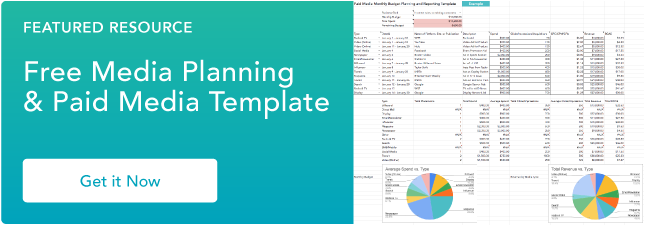- Like
- SHARE
- Digg
- Del
- Tumblr
- VKontakte
- Flattr
- Buffer
- Love This
- Save
- Odnoklassniki
- Meneame
- Blogger
- Amazon
- Yahoo Mail
- Gmail
- AOL
- Newsvine
- HackerNews
- Evernote
- MySpace
- Mail.ru
- Viadeo
- Line
- Comments
- Yummly
- SMS
- Viber
- Telegram
- JOIN
- Skype
- Facebook Messenger
- Kakao
- LiveJournal
- Yammer
- Edgar
- Fintel
- Mix
- Instapaper
- Copy Link
Since its inception in 2009, real-time bidding (RTB) has become one of the most popular ways to purchase ad inventory online.
But even for experienced marketers, this type of programmatic advertising can be a very confusing concept. I, for one, get intimidated just by reading the word “programmatic.”
So let’s break down what RTB is, how it works, and the pros and cons of using it – all while keeping it jargon-free.
What is real-time bidding?
Real-time bidding (RTB) is a type of programmatic advertising which involves buying and selling ad impressions in an auction-style bid. And this transaction all happens in the time it takes a webpage or mobile app to load.
Before we dive into RTB, let’s cover a few basics.
An impression, which is when an ad is displayed on a user’s screen, is the currency used in RTB. Publishers – i.e., the owners of the webpages and mobile apps on which ads are displayed – typically charge for every 1,000 impressions the ad gets. Advertisers know this as the cost per mille (CPM) and place their bids based on the value of each impression.
How do you determine that value? By evaluating the user against your targeting parameters (more on that later).
Are there real-time bidding platforms?
There are no RTB platforms because real-time bidding is a method of purchasing impressions, not a channel. Still confused? Let’s picture a real auction.
Imagine you want to bid on a car. You hire someone to go to the auction for you – that’s your demand-side platform (DSP). The person putting the car up for auction is the publisher and the venue is the marketplace. Raising your hand to indicate a bid is your real-time bidding process.
To purchase ad inventory through RTB, you’ll have to use a DSP, which is a media buying platform on the advertiser side that facilitates the purchase of an ad campaign and monitors its performance. Learn more about that here.
How The Real-Time Bidding Algorithm Works
To understand how the algorithm works, you’ll need to first understand the platforms involved in the process.
On the advertiser side, marketers use DSPs to set up their ad campaign and track its performance. Publishers, on the other hand, use supply-side platforms (SSPs) to list their ad spaces (also known as ad inventory) and the price they charge. They then meet in the middle at the ad exchange, the marketplace where the real-time bidding actually takes place.
To determine what ad inventory to bid on, advertisers will set targeting parameters. For instance, a brand may only want to take users who are in a specific region or have visited their website recently.
So, advertisers, or specifically their DSPs, evaluate ad potential in real time and decide whether or not to place a bid and how much to bid.
So, now that we’ve covered the key elements needed for a real-time bid, let’s go through an example of how it works.
Let’s say Silk is a UK-based beauty brand that just launched a new brow line and is running a campaign. They set up their campaign on a DSP and are targeting users who regularly shop for makeup products, are located in the Manchester area, and are between 18 to 30 years of age. The brand also wants its ads to only show on sites related to beauty and lifestyle.
A user visits a publisher’s site. The publisher’s SSP sends a bid request to the ad exchange where Silk’s DSP will be evaluating the value of the impression. The DSP will then determine if the user meets the parameters outlined in the campaign. If so, the DSP will submit a bid.
If Silk has the winning bid, the user will see the ad once the page loads. This process happens thousands of times on different webpages during the length of Silk’s ad campaign.
Silk’s paid ads manager will also be monitoring their ad’s performance on the DSP to see if it’s reaching the desired audience, or if the parameters should be adjusted.
The Benefits of The Real-Time Bidding Process
Better Tracking
With RTB, advertisers can monitor their campaigns easily without relying on vendors. No need to reach out to multiple publishers and ask for reports, you can get them yourself on your DSP.
This also gives marketers the agility to pivot quickly if their campaign isn’t performing as expected. For instance, you might find that switching out one keyword for another may boost your campaign’s performance and align better with the audience you want to reach.
Better Targeting
When purchasing ads through RTB, you buy one impression at a time. This means that every time a website visitor or mobile app user visits a publisher’s site, you’re able to assess that person’s particular profile and see if it matches your target audience.
It makes for more accurate targeting as you can ensure your ads are only reaching the right people at the right time.
More Cost-Effective
The precision of the real-time bidding algorithm allows marketers to spend their ad dollars on high-value impressions.
Too often, brands launch marketing campaigns that only reach a portion of their target market, leaving the rest of the budget wasted on users who don’t fit the profile.
In addition, RTB takes much of the manual labor out of the online advertising process, allowing marketers to focus on other efforts.
Challenges of Real-Time Bidding
Brand Safety
Where your ad shows up is as important as who sees it. This is because consumers judge brands’ ads based on the surrounding content.
A 2019 Ad Colony survey reported that 60% of consumers have a negative perception of brands whose ads appear near inappropriate, hateful, or offensive content. This can be anything from a site that hosts pirated movies to sites promoting hate speech.
Due to the nature of RTB, there is a risk your ad may appear on a site with content you wouldn’t want your brand associated with. However, brands can limit this issue by putting certain keywords and sites on a deny list. This protects brands from showing up on webpages or mobile apps that don’t align with their identity.
Ad Fraud
Cheq estimated that in 2020, ad fraud would cost digital advertisers $35 billion, with 10.5% of digital ads reaching bots.
Beyond cost, the rising sophistication of bots can also cause brands to gather inaccurate data on their campaigns.
Some deceitful publishers fabricate impressions to steal from advertisers. One way to combat this is by using a DSP or ad network with fraud detection software.
Real-time bidding makes the online advertisement process fast and easy. Marketers can skip the back-and-forth previously associated with ad buying and focus on tracking the results.
Originally published Apr 9, 2021 7:00:00 AM, updated April 09 2021




